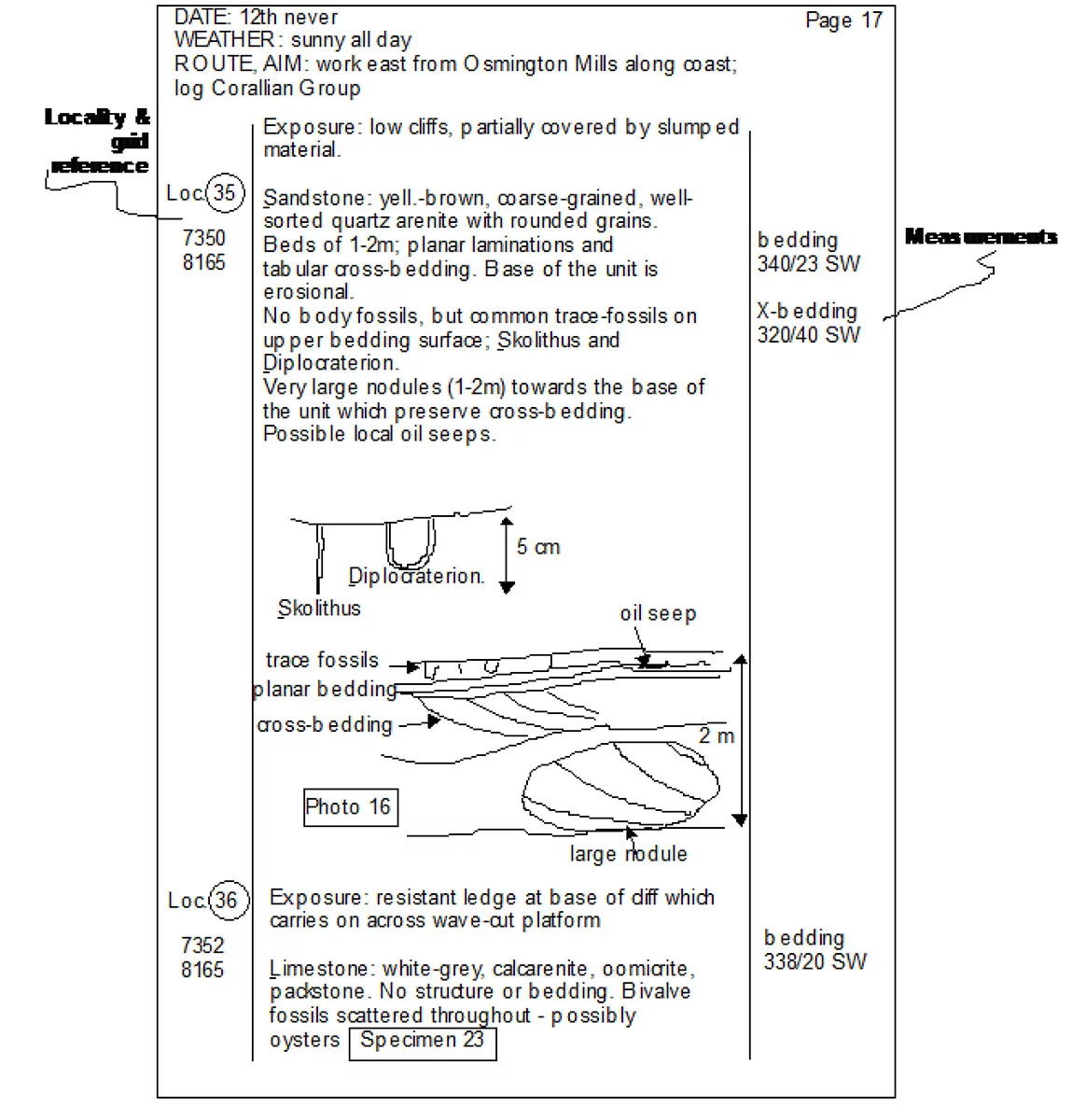Field notebooks
1. What constitutes a good book to use- size – waterproof – lined, ruled, squared....?
2. What is the purpose of a field notebook?
3. Layout. The purpose of keeping a FNB to a large extent determines its layout. It needs to be logically and clearly laid out in order for it to be a useful record of your observations and aide memoir.
A good rule of thumb is that a trained geologist should be able to use your FNB to go to a locality and find and identify a feature which you are describing. They might not agree with your interpretation but they should be able to reproduce your observations (in this case that means using your field note book to identify what you are describing in the field).
Specific good practice for notebooks
A. Clearly distinguish between observations and interpretation. I was taught to put observations on the left page of a FNB and my interpretations on the right page. This is quite wasteful of paper since you will often be making many more observations than interpretations. You could alternatively draw a box around interpretations – or write 'Interpretation: These observations mean that......'. Each of these have their strengths and weaknesses but the point is you need to find some way of doing this clearly and consistently.
B. The narrative aspect of your FNB is primarily related to the outcrops which you visit and the order in which you visit them. Number the pages of your notebook and have an index at the front. You might want to write your planned route and aims at the start of each day. This is a good practice to develop since if you end up working remotely you will want to fill in route cards with planned routes and contingency plans incase rescue is necessary (and remember to give them to someone who knows what to do if you don't come home or contact them by a pre-arranged time)
C. Start a new locality on a fresh page. If you think you might go back there, leave some spare page for future observations. Name each locality, give a geographical coordinate (in the UK 6-figure grid references are best; elsewhere you might be using GPS coordinates – make sure you know which standard your GPS is using). Given the weather and approximate time of day– things can look very different depending on how wet they are or if they are in sunlight/shadow. Sometimes you might want to revisit an outcrop under different conditions. It can be a good idea to note your mood – you will perform differently if you are feeling out of sorts from when you are on top form and this might also mean you want to revisit an outcrop.
How to lay out a field notebook
Recommendations:

Field sketching
A picture is worth a hundred words and it is often much easier to record the geological observations with a quick diagram than to describe them in words. Field sketches are a small step on from this and an invaluable part of any field notebook. There is a separate page with advice on field sketching.